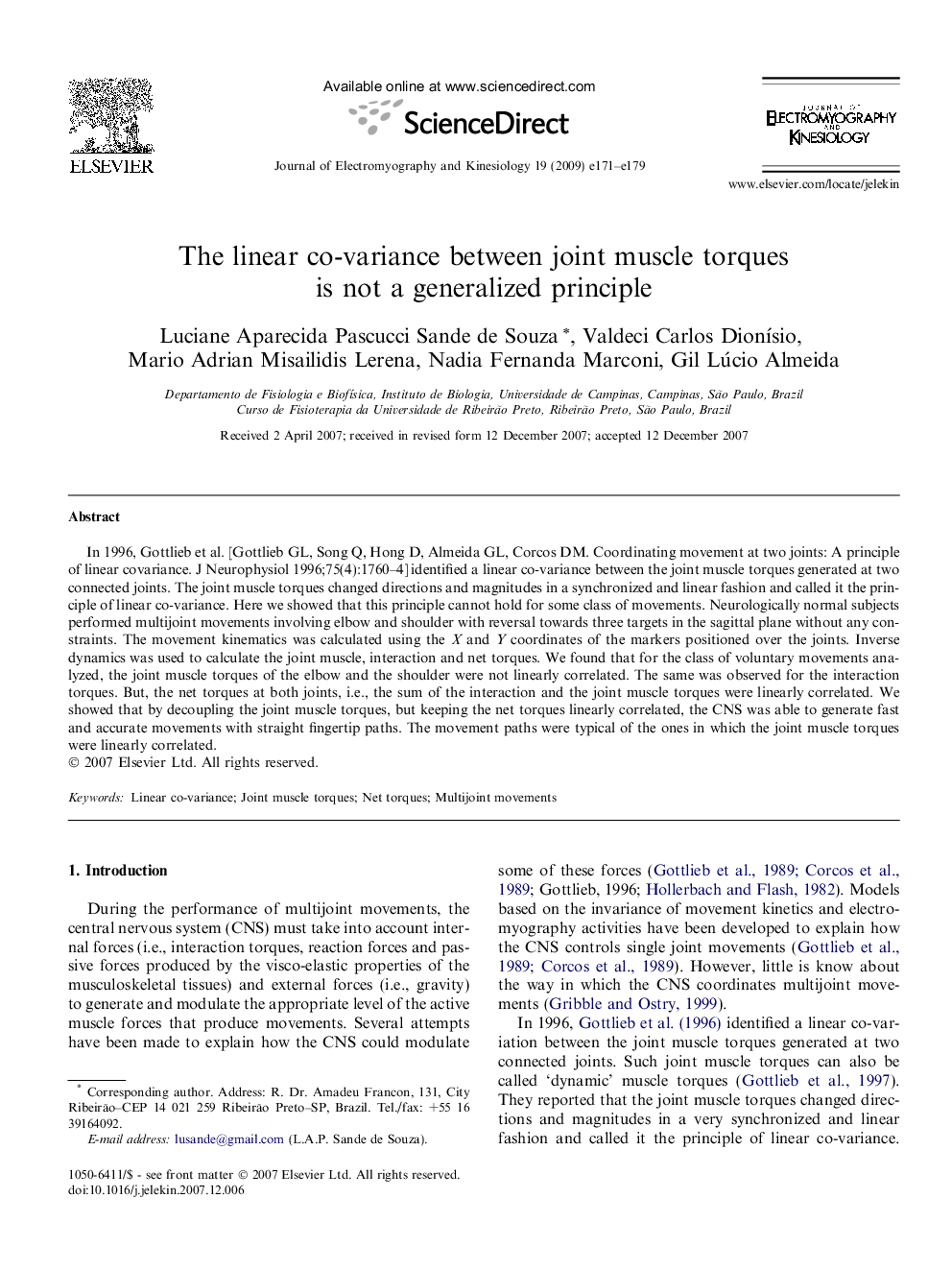| Article ID | Journal | Published Year | Pages | File Type |
|---|---|---|---|---|
| 4065356 | Journal of Electromyography and Kinesiology | 2009 | 9 Pages |
In 1996, Gottlieb et al. [Gottlieb GL, Song Q, Hong D, Almeida GL, Corcos DM. Coordinating movement at two joints: A principle of linear covariance. J Neurophysiol 1996;75(4):1760–4] identified a linear co-variance between the joint muscle torques generated at two connected joints. The joint muscle torques changed directions and magnitudes in a synchronized and linear fashion and called it the principle of linear co-variance. Here we showed that this principle cannot hold for some class of movements. Neurologically normal subjects performed multijoint movements involving elbow and shoulder with reversal towards three targets in the sagittal plane without any constraints. The movement kinematics was calculated using the X and Y coordinates of the markers positioned over the joints. Inverse dynamics was used to calculate the joint muscle, interaction and net torques. We found that for the class of voluntary movements analyzed, the joint muscle torques of the elbow and the shoulder were not linearly correlated. The same was observed for the interaction torques. But, the net torques at both joints, i.e., the sum of the interaction and the joint muscle torques were linearly correlated. We showed that by decoupling the joint muscle torques, but keeping the net torques linearly correlated, the CNS was able to generate fast and accurate movements with straight fingertip paths. The movement paths were typical of the ones in which the joint muscle torques were linearly correlated.
